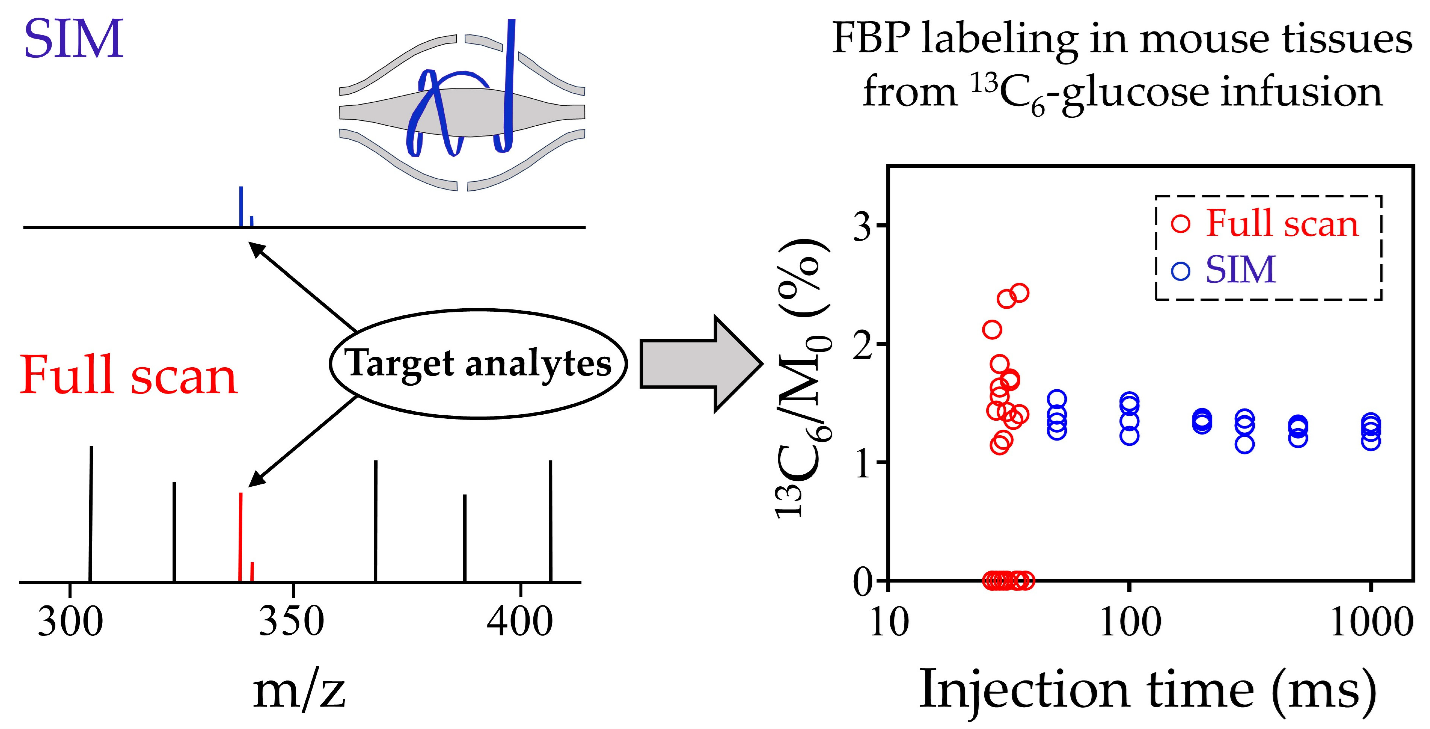Selected Ion Monitoring for Orbitrap-based Metabolomics
Themes: Conversion
Keywords: Mass Spectrometry, Metabolomics
Citation
Lu, W., McBride, J.M., Lee, W.D., Xing, X., Xu, X., Li, X., Oschmann, A.M., Shen, Y., Bartman, C., Rabinowitz, J.D. March 25, 2024. Data from: “Selected Ion Monitoring for Orbitrap-Based Metabolomics.” UCSD. DOI: 10.25345/C5JH3DD3K
Overview

Orbitrap mass spectrometry in full scan mode enables the simultaneous detection of hundreds of metabolites and their isotope-labeled forms. Yet, sensitivity remains limiting for many metabolites, including low-concentration species, poor ionizers, and low-fractional-abundance isotope-labeled forms in isotope-tracing studies. Here, we explore selected ion monitoring (SIM) as a means of sensitivity enhancement. The analytes of interest are enriched in the orbitrap analyzer by using the quadrupole as a mass filter to select particular ions. In tissue extracts, SIM significantly enhances the detection of ions of low intensity, as indicated by improved signal-to-noise (S/N) ratios and measurement precision. In addition, SIM improves the accuracy of isotope-ratio measurements. SIM, however, must be deployed with care, as excessive accumulation in the orbitrap of similar m/z ions can lead, via space-charge effects, to decreased performance (signal loss, mass shift, and ion coalescence). Ion accumulation can be controlled by adjusting settings including injection time and target ion quantity. Overall, we suggest using a full scan to ensure broad metabolic coverage, in tandem with SIM, for the accurate quantitation of targeted low-intensity ions, and provide methods deploying this approach to enhance metabolome coverage.
Data
MassIVE: Includes CCMS parameters, raw mass spectrometry data
Download (179.3 KB) includes:
- Scan parameter settings
- Metabolite standards
- Signal intensities